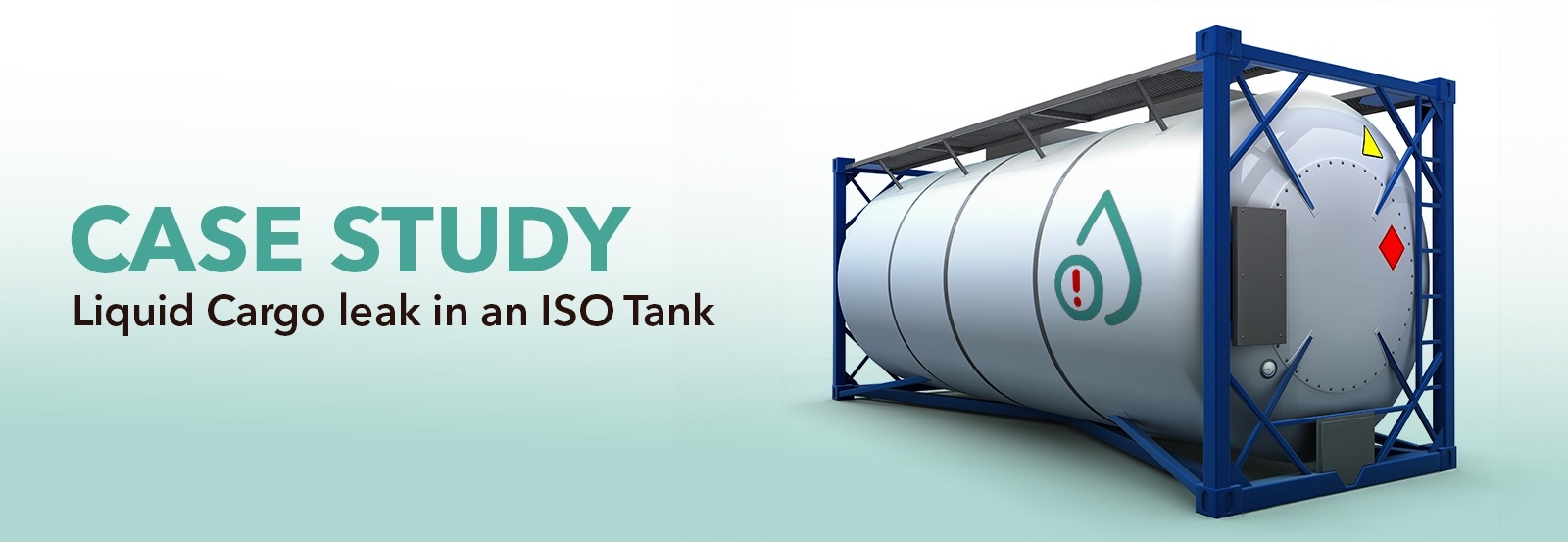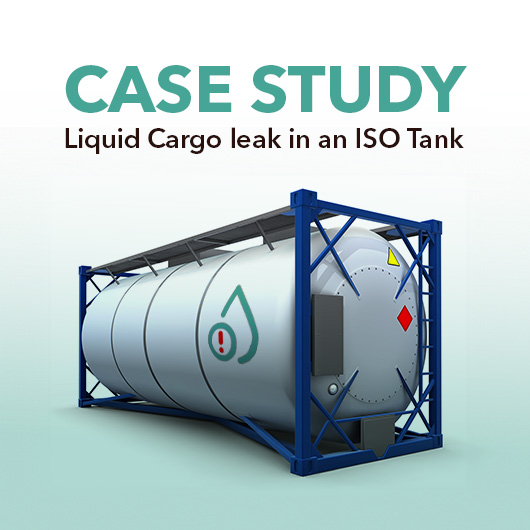
From Leak to Leak-Proof: A Case Study of Leakage in Liquid transport
Introduction: The transportation of hazardous liquids, such as Crude Sulphate Turpentine, poses significant challenges and risks. This case study examines an incident involving leakage during the rail loading of three tank containers, the immediate actions taken to address the issue, and the corrective measures implemented to ensure safe transport.
Background:
- Product Name: Crude Sulphate Turpentine
- Port of Loading (POL): Russia
- Port of Discharge (POD): Dadri
- Number of Tanks: 3
- Tank Capacity: 25,000 L each
- Loaded Volume: 21,660 kg, 22,000 kg, and 21,500 kg
Incident Overview:
While rail loading, three 20-foot tank containers loaded with Crude Sulphate Turpentine were found to be leaking, a pale yellow coloured liquid was dripping from the drain tube of the tanks. Immediate action was taken to address this issue.
Immediate Actions Taken:
- Initial Inspection:
- A technician attended the tanks at GTI Terminal to determine the cause of the leakage. The inspection revealed that the leakage originated from the Manlid, potentially due to overloading and improper fitting of the gasket, Manlid swing bolts were found to be in tight condition and seals were unharmed.
- Third-Party Verification:
- To validate the findings, a third-party surveyor was engaged at two different stages. Both assessments corroborated the initial observation, and the reports were shared with the customer.
- Recommendation for Gasket Replacement:
- It was determined that the leakage was caused by overloading and an improperly fitted gasket. The customer was advised to replace the damaged PTFE gasket with an STT gasket, suitable for holding the pressure and cargo inside the tank.
- Customer-Suggested Interventions:
- Based on the consignee's suggestion, a technician attempted to unfasten and re-tighten the swing bolt without breaking the seals. Additionally, the airline valve was opened to let the flushing settle before performing this task. Despite these efforts, the leakage persisted.
Corrective Actions Implemented:
- Gasket Replacement:
- After the consignee's approval, the technician replaced the damaged gasket with an STT gasket. All necessary permissions were obtained from the port authority to break the seals for this operation.
- After taking in consideration of all the safety precautions, technician was arranged to attend the leakage. As a standard practise technician wore the PPE kits while performing the task to ensure safety and prevent exposure to hazardous materials.
- Upon opening the manlid, it was found that the tanks were fully loaded, and the gasket was compressed due to over-tightening, leaving gaps.
- The new gasket was installed, and the swing bolt was properly tightened, following all safety precautions.
- Observation and Sealing:
- The tanks were monitored for 45 minutes to ensure no further leakage. After confirming the absence of leaks, new wired seals were applied.
- Re-inspection:
- A comprehensive re-inspection was conducted on Day 2. The tanks were observed to be leak-free, and port authorities confirmed that the tanks were safe for rail movement.
Root Causes Identified:
- Overfilling of the tanks by the shipper, not accounting for cargo expansion due to temperature changes during transit.
- Over-tightening of the manlid, causing compression of the gasket.
- Improper gasket installation, with the gasket being over-cut, resulting in gaps and inadequate sealing.
Impact Assessment:
The leakage of Crude Sulphate Turpentine from the tanks posed significant environmental and safety risks. Crude Sulphate Turpentine is a hazardous substance, and its leakage can have the following potential impacts:
Environmental Impact:
- Soil Contamination:
- The leakage could lead to soil contamination, adversely affecting local ecosystems and potentially entering the groundwater.
- Water Pollution:
- If the leakage reached water bodies, it could result in severe water pollution, harming aquatic life and making the water unsafe for human use.
- Air Quality:
- The evaporation of Crude Sulphate Turpentine can release volatile organic compounds (VOCs) into the air, contributing to air pollution and posing respiratory health risks to nearby populations.
Safety Impact:
- Health Hazards:
- Exposure to Crude Sulphate Turpentine can cause skin irritation, respiratory problems, and other health issues for workers handling the material and individuals in the vicinity.
- Fire Hazard:
- The substance is flammable, and any leakage increases the risk of fire or explosion, especially in areas with inadequate ventilation or heat sources.
- Operational Delays:
- Leakage incidents can lead to significant operational delays, affecting the supply chain and causing financial losses for all parties involved.
Prompt resolution of the leakage was essential to mitigate these environmental and safety risks, ensuring the protection of personnel, local communities, and the environment.
Conclusion:
The leakage in the Crude Sulphate Turpentine tanks was primarily due to overfilling, improper tightening of the manlid swing bolts, and incorrect gasket installation. Following corrective measures, including the replacement of the gasket and proper sealing procedures, the issue was resolved. The tanks were subsequently inspected and found to be secure for further movement. Leakage of Crude Sulphate Turpentine can pose environmental and safety hazards, making prompt resolution essential.
This case highlights the importance of adhering to proper loading and sealing protocols to prevent similar incidents. For future shipments, it is crucial to consider the expansion of cargo due to temperature changes, follow correct tightening procedures, and ensure the appropriate length and fitting of gaskets.
By addressing these factors, the risk of leakage can be significantly minimized, ensuring safe and efficient transportation of Crude Sulphate Turpentine. The prompt resolution minimized delays and ensured the timely delivery of the product to the customer.


